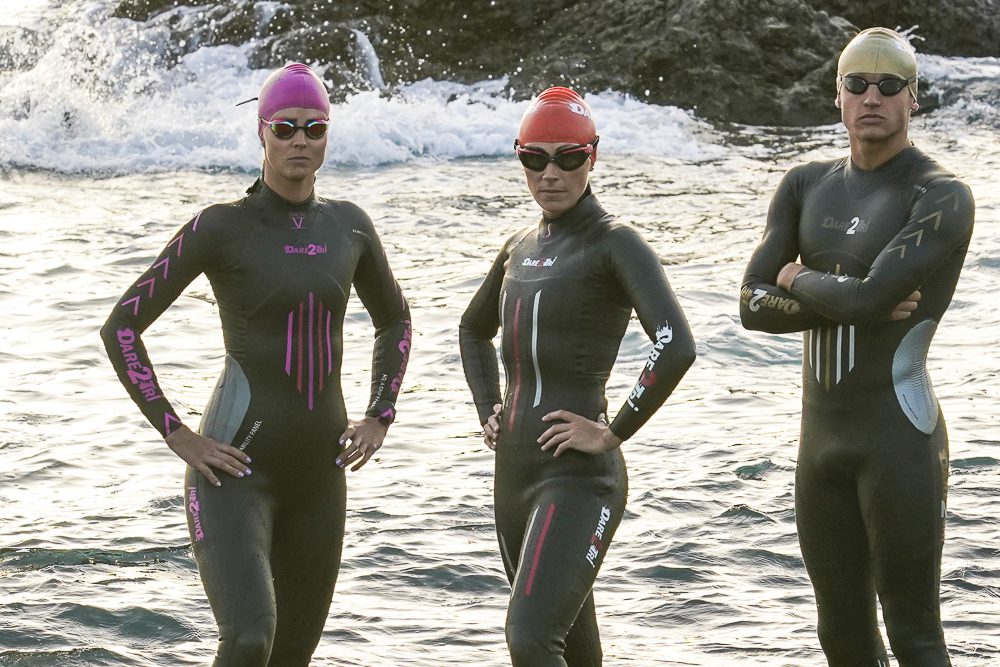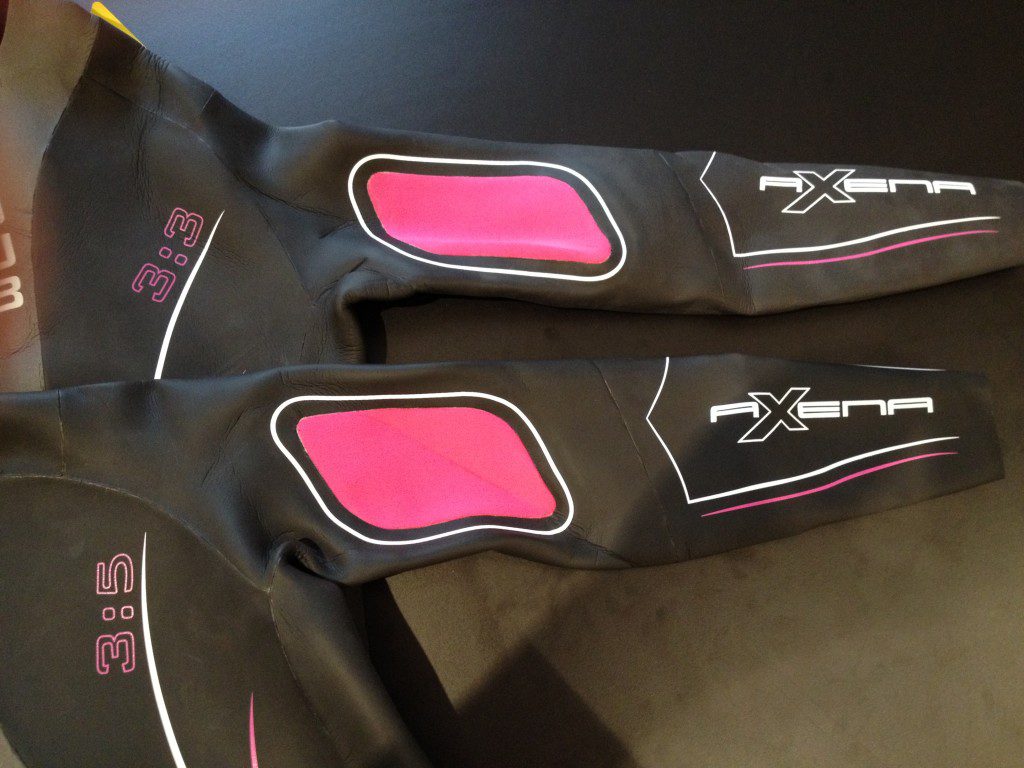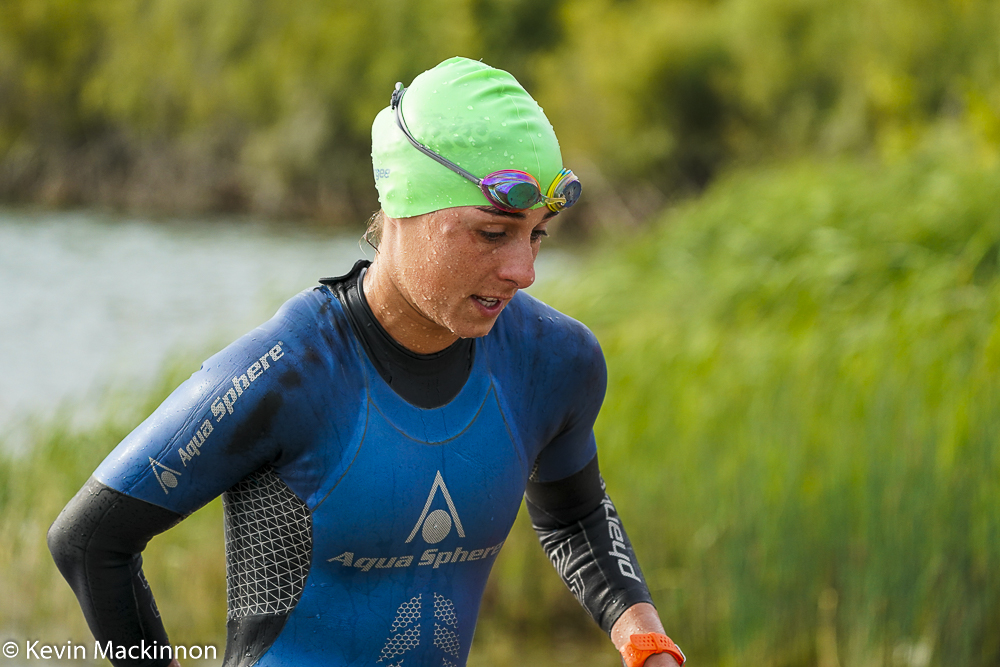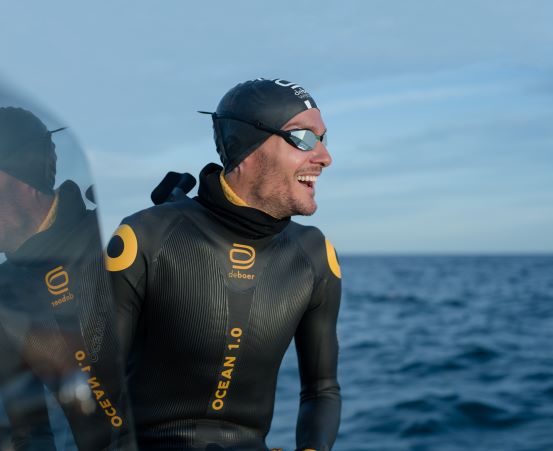Wetsuit 101: Everything a triathlete needs to know about wetsuit tech
A guide to wetsuit technology and lingo
 Photo by:
Kevin Mackinnon
Photo by:
Kevin Mackinnon
No matter how good a swimmer you are, you’ll go faster wearing a wetsuit. The added flotation the suit provides allows you to sit higher in the water and get through the water more quickly. While the best swimmers will still get some benefit, the advantages increase exponentially for those whose technique isn’t as good. That’s why the best swimmers are always hoping for a non-wetsuit swim – they know that what could be a one- or two-minute advantage at the end of the first leg could be double that or even more as they hit the bike.
The first triathlon wetsuits were designed by Dan Empfield, the founder of Quintana Roo, in 1987. If you look at some of those early wetsuits (sadly, I can date myself because I actually used one), there was next-to-no change to wetsuit design for the next 20 years.
Over the last decade or so, though, we’ve seen wetsuit manufacturers make some huge innovations when it comes to wetsuit design. The goal is to provide the added flotation and warmth a wetsuit provides without affecting technique, and innovations to the thickness of the rubber used around the shoulders and using different panels to provide buoyancy exactly where you need it have been game changers in wetsuit performance. Here’s a look at some of the technology that’s being applied in wetsuits, and what it all means.

Flotation and Paneling
When you look at a world-class swimmer in the pool, they look high in the water. Years of practice and refined technique allow these athletes to make that all look easy. Through the first few decades of triathlon wetsuit design, flotation was the big goal, and most companies stacked the suits with 5 mm thick panels of rubber (the maximal thickness allowed by World Triathlon) to achieve that goal. In addition to improved materials which can provide more flotation (we’ll get to that momentarily).
Now companies have refined that process to try and enhance a swimmer’s position in the water. Coaches will often ask their athletes to try and imagine a “downhill” process, with our head down and hips high in the water. By increasing the amount of flotation around the hips and legs, a wetsuit can help you achieve that “downhill” position. Some manufacturers have taken that approach to design suits based on your specific technique, providing more, or less, flotation around the hips and legs to help you achieve the optimal position in the water based on your swimming level.

Types of rubber
When it comes to the type of neoprene rubber used in wetsuits, Yamamoto reigns supreme as the top manufacturer. Most wetsuits you’ll see used a combination of Yamamoto #38, 39 or 40 rubber. Thin panels of Yamamoto #40 are often used in the shoulders of the most expensive suits because it is very flexible, while the less stretchy #38 and 39 will be seen in the thicker panels around the torso, hips and legs. You’ll also see some suits that use Yamamoto Aerodome rubber, which is lighter.
In the past the thin rubber sometimes used for the shoulders and sleeves tended to rip easily, but over the last few years we’re seeing manufacturers use some innovative new rubber that is very thin, but also very durable.
There are other neoprene manufacturers other than Yamamoto out there – you might see a model that utilizes Sheico brand materials. The Sheico products tend to have a more comfortable jersey liner.
Design
Men’s and women’s body shapes tend to be different, especially around the hips and shoulders, so a unisex wetsuit might not provide the best fit. That’s why it’s important to try a suit on before you buy it. In addition to the fit, men and women will also have a different centre of gravity, so the panels will need to be designed differently, too, to provide the best flotation and support.

Thermal suits
You’ll see a few models that are designed for swimming in colder water. These thermal suits use a warm lining to keep you warm when swimming in cold water. The suits we’ve tested have truly lived up to the billing – combined with a hood, gloves and booties, they can make it possible to swim in very cold water.
Other features
Zippers will, most often, go from the bottom up, but some manufacturers will design the suit with a zipper that runs from the top down, providing a bit more of an opening to make the suit easier to get out of. Most of the time you have a decent run from the water to T1, so you have time to get that zipper organized before you get to your bike, but for some it can be of benefit. The top-down zippers can be a bit more of a challenge to put on when you’re by yourself, though. More expensive suits will use YKK stainless steel zippers.
You’ll see a variety of different neck styles in different suits – some that fit a bit higher, and others a bit lower. If you have a chance to try a few different styles, you’ll get a feel for which works best for you.
Sleeved vs Sleeveless wetsuits
There are few givens when it comes to wetsuits. First off, a sleeved wetsuit should always be faster than a sleeveless one. That’s because there is more rubber to help you get higher in the water, which will help you go faster. There’s also less drag – the neoprene provides a smoother surface than your skin, especially if you haven’t shaved your arms. If you are only going to get one wetsuit, it probably makes sense to get one with sleeves – it will provide more warmth if you end up at a cold-water swim.
That’s especially true if you’re looking at some of the more expensive suits out there. These suits use incredibly thin rubber around the shoulders and arms, so you won’t feel restricted while you’re swimming. That’s even more important for excellent swimmers, who appreciate the full reach and range of motion these suits provide.
That said, for some people a sleeveless wetsuit ends up being the best option. Those who prefer sleeveless suits feel they have much better range of motion, especially around the shoulders. That’s especially true if you’re comparing a sleeveless suit with a less-expensive full-sleeve suit that uses thicker rubber through the shoulders. You’ll also see some pros use a sleeveless suit in warmer water.
The best option is to try a few different suits out to see what feels and works best for you. Since so many swims at Canadian events are in cooler water, you’re likely best off with a full-sleeve suit, but for some, a sleeveless version will feel much better.
